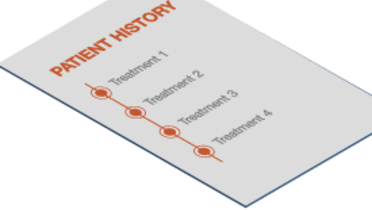-
0
Patient Assessment
- 0.1 Patient demand
- 0.2 Overarching considerations
- 0.3 Local history
- 0.4 Anatomical location
- 0.5 General patient history
-
0.6
Risk assessment & special high risk categories
- 5.1 Risk assessment & special high risk categories
- 5.2 age
- 5.3 Compliance
- 5.4 Smoking
- 5.5 Drug abuse
- 5.6 Recreational drugs and alcohol abuse
- 5.7 Parafunctions
- 5.8 Diabetes
- 5.9 Osteoporosis
- 5.10 Coagulation disorders and anticoagulant therapy
- 5.11 Steroids
- 5.12 Bisphosphonates
- 5.13 BRONJ / ARONJ
- 5.14 Radiotherapy
- 5.15 Risk factors
-
1
Diagnostics
-
1.1
Clinical Assessment
- 0.1 Lip line
- 0.2 Mouth opening
- 0.3 Vertical dimension
- 0.4 Maxillo-mandibular relationship
- 0.5 TMD
- 0.6 Existing prosthesis
- 0.7 Muco-gingival junction
- 0.8 Hyposalivation and Xerostomia
- 1.2 Clinical findings
-
1.3
Clinical diagnostic assessments
- 2.1 Microbiology
- 2.2 Salivary output
-
1.4
Diagnostic imaging
- 3.1 Imaging overview
- 3.2 Intraoral radiographs
- 3.3 Panoramic
- 3.4 CBCT
- 3.5 CT
- 1.5 Diagnostic prosthodontic guides
-
1.1
Clinical Assessment
-
2
Treatment Options
- 2.1 Mucosally-supported
-
2.2
Implant-retained/supported, general
- 1.1 Prosthodontic options overview
- 1.2 Number of implants maxilla and mandible
- 1.3 Time to function
- 1.4 Submerged or non-submerged
- 1.5 Soft tissue management
- 1.6 Hard tissue management, mandible
- 1.7 Hard tissue management, maxilla
- 1.8 Need for grafting
- 1.9 Healed vs fresh extraction socket
- 1.10 Digital treatment planning protocols
- 2.3 Implant prosthetics - removable
-
2.4
Implant prosthetics - fixed
- 2.5 Comprehensive treatment concepts
-
3
Treatment Procedures
-
3.1
Surgical
-
3.2
Removable prosthetics
-
3.3
Fixed prosthetics
-
3.1
Surgical
- 4 Aftercare
Patient compliance/recall
Key points
- Patient compliance is as important to long-term treatment success as any other contributing factor
- Understanding the patient’s lifestyle and home culture is important to reach effective compliance
- A standardized education protocol to promote patient compliance should be part of the treatment plan and aftercare
Patient compliance considerations
Patient compliance is a critical factor in promoting the long-term success of oral rehabilitation. The issue of patient compliance should be enthusiastically engaged by the clinician/dental practitioner. The practitioner may see a non-compliant patient as a culprit. Actually, four key issues need to be considered.
Patient environment
First it is important to appreciate the patient’s culture and lifestyle. Efforts to change behavior that are not aligned with the patient’s social environment are unlikely to be successful. Considering different behavioural techniques to modify a patient’s attitude and improve his/her compliance can be effective. It is helpful to set small target steps and look for incremental progress rather than seek complete and immediate changes.
Maintenance and compliance as part of the treatment plan
Second, each member of the treatment team should view oral hygiene instruction and prosthesis maintenance education as a priority. This sense can be reinforced by including these activities as formal elements to the treatment plan and the maintenance phase and committing sufficient time and effort at regular recall appointments. In this manner, the team can ensure oral health, prosthesis longevity and patient satisfaction.
Third, there is evidence that patients who were actively engaged during treatment planning, are more likely to be compliant. A paternalistic approach of the doctor will lead to poorer patient compliance.
Fourth the relationship beteen the practitioner and the patient is a clear predictor of the subsequent compliance.
Patient personality
The patient’s personality is an important predictor of patient compliance. Patients with high acceptance and resignation are more open to the need for compliance and willing to engage in the actions asked of them. Although indifferent/ambivalent patients will offer an intermediate level of compliance, skeptical patients are very difficult to engage successfully because they actively do not believe what you are trying to teach them. Therefore, identifying a skeptical patient during the patient interview and treatment planning phase is important.



